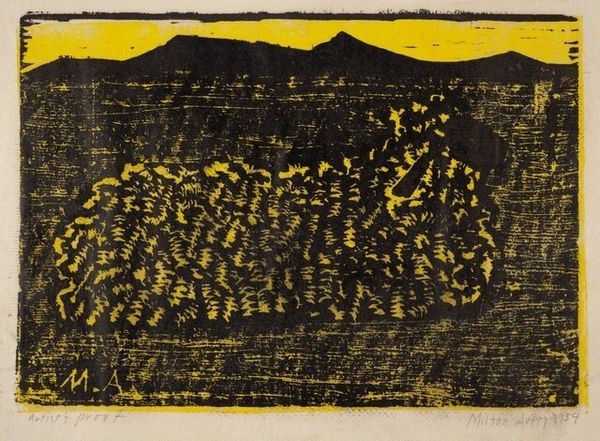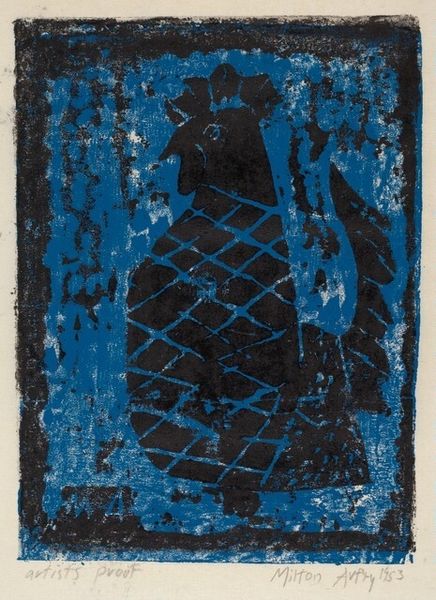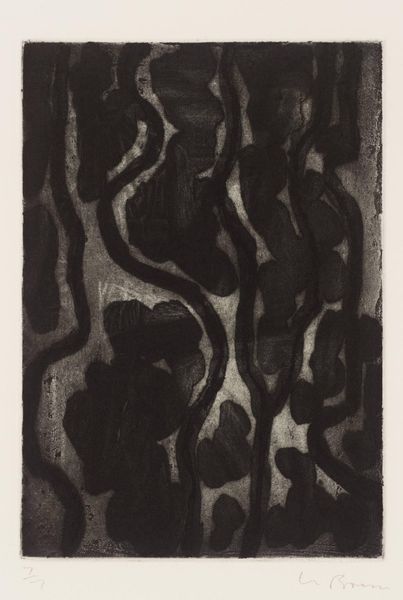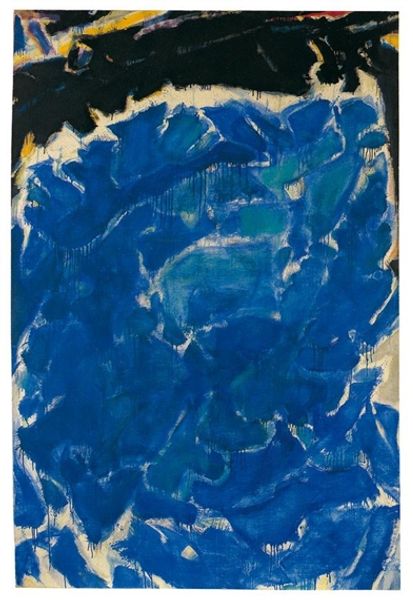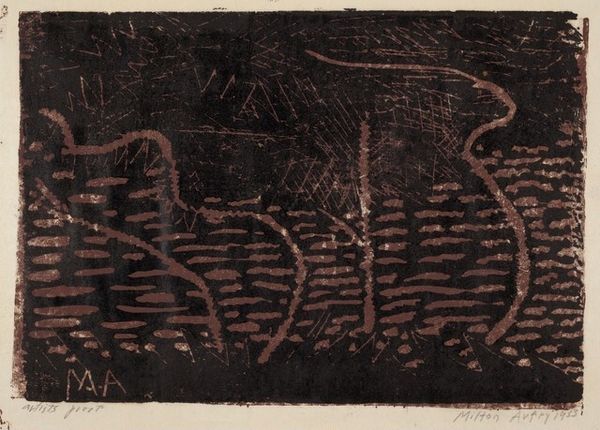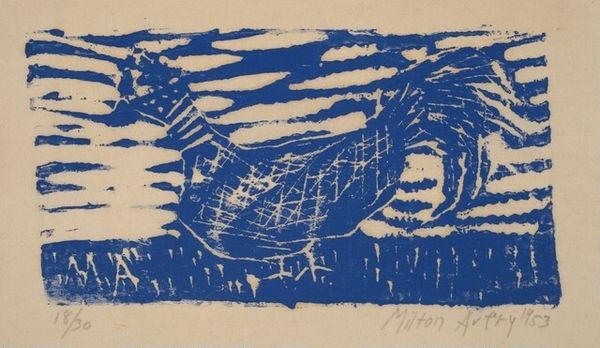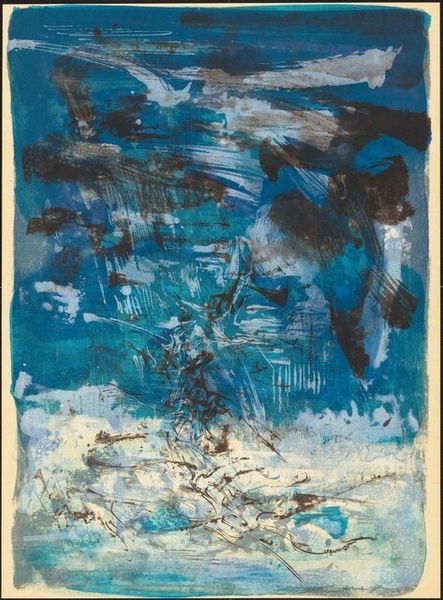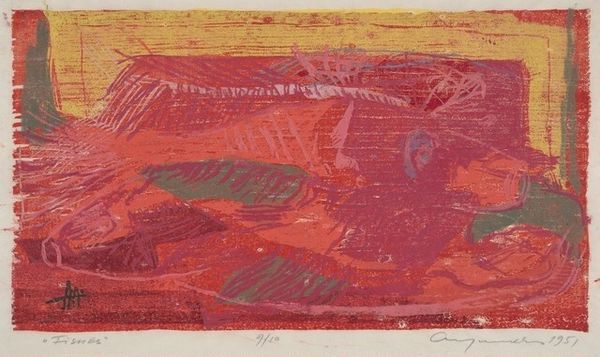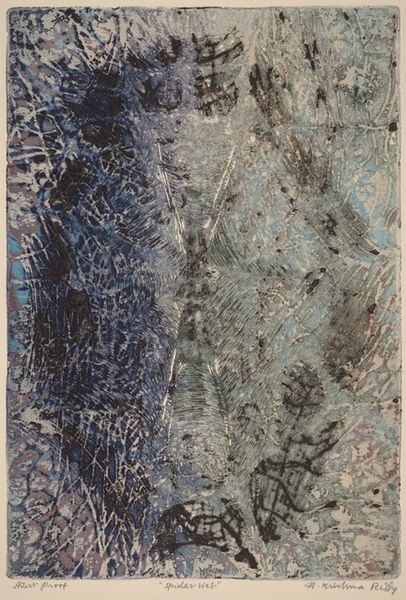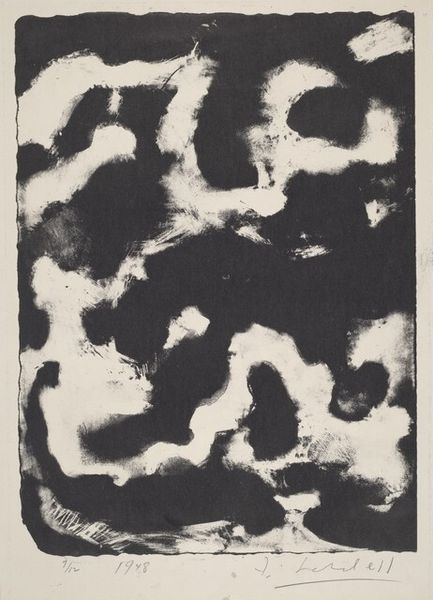
#
abstract-expressionism
#
abstract expressionism
# print
#
landscape
#
form
Dimensions: image: 24.7 x 36.1 cm (9 3/4 x 14 3/16 in.) sheet: 30.1 x 45.6 cm (11 7/8 x 17 15/16 in.)
Copyright: National Gallery of Art: CC0 1.0
Curator: The artwork before us, titled "Lamb," was created in 1954 by Milton Avery. He rendered this image as a print. The image pulsates, seemingly alive and quivering. Editor: Immediately, the monochromatic color scheme strikes me. A restricted palette in blues creates an atmosphere of muted intensity. What materials were used to achieve such a layered effect? Curator: Considering the time this was created, and given Avery's abstract expressionistic leanings, "Lamb" exists at the confluence of postwar anxieties. The image can be interpreted through existentialist lenses. Editor: That reading sits well alongside its materiality. Note the palpable texture and process here; I am interested in this lamb as object. This work's value relies heavily on understanding its construction—its means of production. It isn't merely a lamb; it's about labor, how Avery manipulated those blues. Curator: Absolutely, though perhaps the labor itself, manifested in the repetitive mark-making, speaks to a certain Sisyphean frustration endemic to mid-century existence, a comment on production and value itself. Avery, during this era, also became closely acquainted with artists such as Mark Rothko and Barnett Newman. Editor: But this print begs a viewer to focus on form over any potential subject matter. Consider its limitations: this print cannot hope to accurately portray reality but may, perhaps, gesture towards it. What social structures afforded the production and later acquisition of it? These aspects are inextricable from its reading. Curator: It's in that tension, between formal experimentation and cultural unease, where "Lamb" gains its real power, no? It’s in what is concealed or obfuscated and gestures towards wider social truths. Editor: Perhaps its value truly lies in both its form and the reality that brought it into existence, and its status within the artist's broader ouevre. Curator: It feels imperative to think of Avery as a socially conscious artist operating in a charged climate. The aesthetic restraint only amplifies the undercurrent of resistance. Editor: Indeed, understanding its process unveils a deeper significance. Its power resides in both object and idea.
Comments
No comments
Be the first to comment and join the conversation on the ultimate creative platform.
